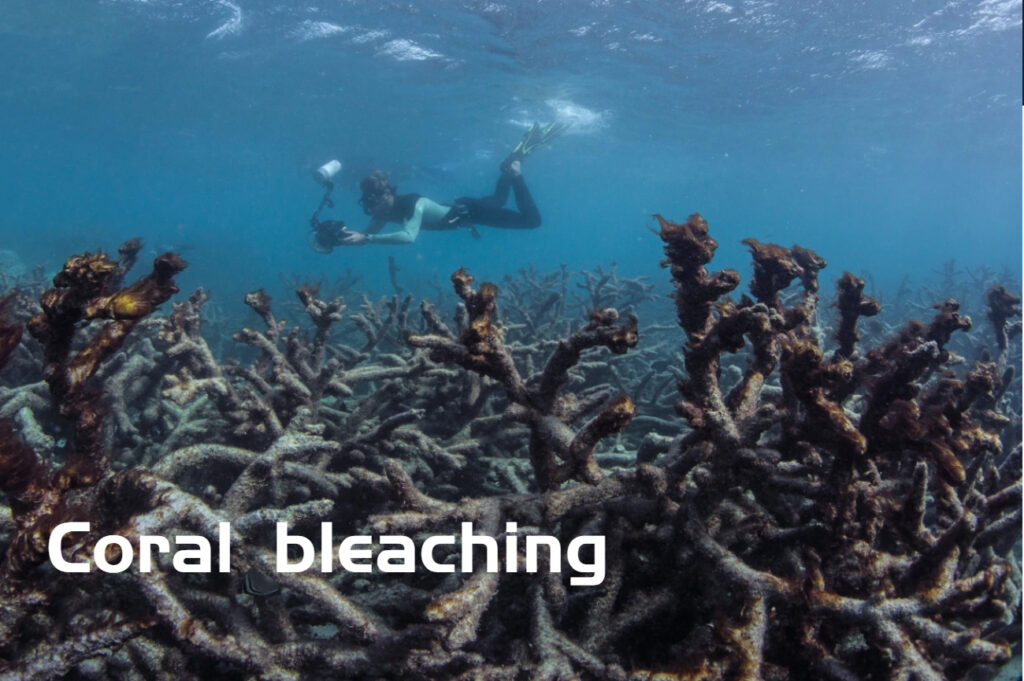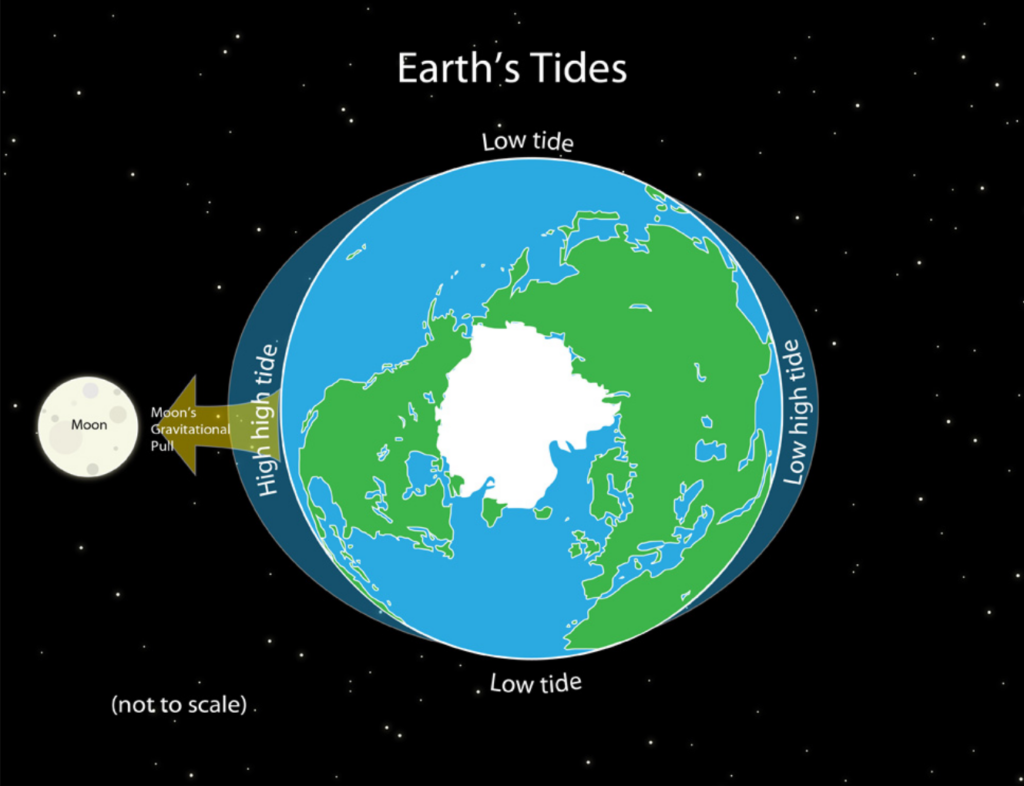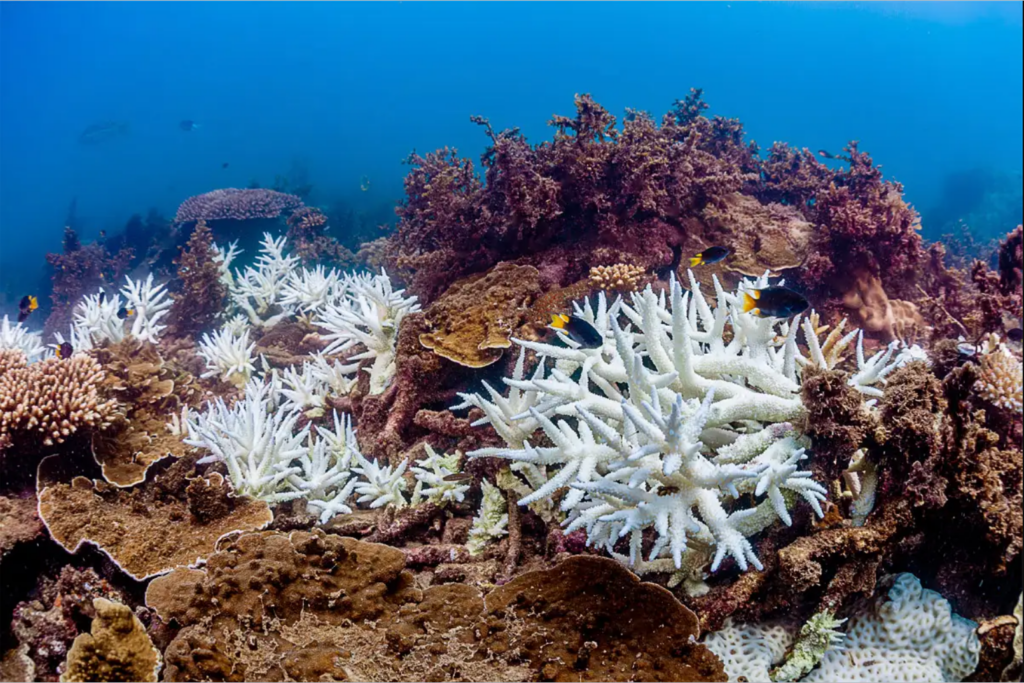
A diver swims through coral bleaching on the Great Barrier Reef in 2016.
Sourse: The Ocean Agency/XL Catlin Seaview Survey
What is coral bleaching?
Coral bleaching is the loss or reduction of symbiotic algae (zooxanthellae) within the coral beast, resulting in the coral turning white. The relationship between corals and symbiotic algae is reciprocal and symbiotic, with the coral providing the growing environment and nutrients and the symbiotic algae providing the coral with organic matter and oxygen needed for photosynthesis. When corals are stressed (e.g., increased temperature, pollution, acidification, etc.), the symbiotic algae within the coral beast are lost or reduced, and the coral consequently loses much of its color and turns white or lighter.
Facts about coral bleaching

Change in Sea Surface Temperature, 1901–2020
Data source: IPCC, 2013; NOAA, 2021
Rising ocean temperatures caused by climate change is the primary cause of coral bleaching.

Coral bleaching
Sourse: Great Barrier Reef Foundation
A temperature increase of just one degree Celsius for only four weeks can trigger bleaching.

Earth’s Tides Effect
Sourse: Mary Crooks
During bleaching corals become transparent, revealing their white skeletons. Changes in water quality, increased sun exposure and extreme low tides can also cause corals to bleach.


Mass bleaching events
The past two decades have seen several widespread coral bleaching events on our Great Barrier Reef, with four mass bleaching events in the last seven years.
2022
Coral bleaching was observed along the length of the Reef, with the Northern and Central regions experiencing extreme bleaching. In the South, bleaching was mostly minor. This mass bleaching event was particularly concerning because it occurred during a La Niña summer, which typically brings cooler, wetter conditions.
2020
Widespread severe bleaching was detected across many regions of the Great Barrier Reef. Of the 1,036 reefs surveyed from the air, 60% suffered moderate or severe bleaching. On-water monitoring capabilities were restricted due to the Covid-19 pandemic, so limited data on coral mortality was collected.
2017
The Reef experienced unprecedented back-to-back (2016 and 2017) bleaching, collectively affecting two-thirds of the Great Barrier Reef. The central third of the Great Barrier Reef was severely affected in early 2017, due to unusually warm sea surface temperature and accumulated heat stress. The southern sector was spared both years.
2016
In 2016, the Far Northern management area between Cape York and Port Douglas experienced widespread and severe bleaching due to record ocean temperatures. This led to record widespread coral bleaching on the Reef, with overall coral mortality at 22%. Bleaching in southern parts of the Reef was less severe.
What Should We Do?

Reduce greenhouse gas emissions
Coral bleaching is often caused by increased ocean temperatures, which is linked to climate change. Therefore, reducing greenhouse gas emissions is essential to prevent further damage to coral reefs.

Promote coral restoration
Coral restoration efforts can involve re-planting coral fragments or even creating artificial reefs to provide habitats for new coral growth.

Monitor coral health
Regular monitoring of coral health can help identify bleaching events and allow for prompt action to be taken to mitigate their effects.

Protect coral reefs
Protecting coral reefs from human activities such as overfishing, pollution, and physical damage can help reduce stress on coral and increase their resilience to bleaching.

Improve water quality
Reducing pollution and runoff from agricultural and industrial activities can improve water quality, which can in turn reduce stress on coral and increase their resilience to bleaching.

Support research
Supporting scientific research on coral bleaching can help advance our understanding of the causes and impacts of this phenomenon, as well as identify new ways to mitigate its effects. This can involve donating to organizations that fund research or advocating for increased funding for coral reef research.
Explore more
Helioporacoral by yl279 on Sketchfab






Download these 3D model here!
Proudly powered by WordPress